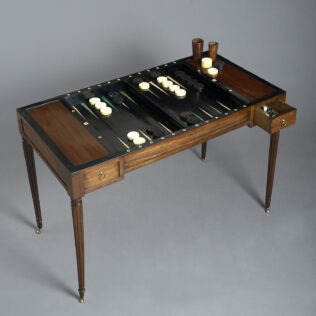The European fascination with Japanese “Imari” porcelain really began in the late 17th century and items of varying size, shape or form quickly became as much a focal point of grand Western homes as their Chinese counterparts.
Imari works are customarily decorated in red and blue glazes, highlighted with gilded outlines, over a white, almost translucent body. Their decoration, often geometric cartouches, can contain anything from landscapes and figures over birds and mythical beasts to kimono textile patterns. As a rule of thumb, older pieces tend to have a slightly bluish tint to their body, whereas later designs involve generally more vibrant colours. As a (potential) collector it is also good to know, that a seal to the bottom of a work is not an indication of the piece’s age or authenticity.
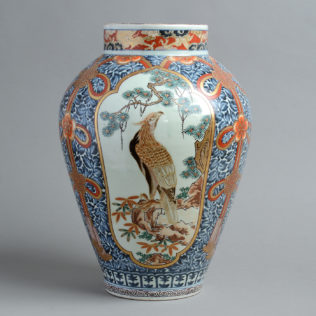
The technique of porcelain production originated in China during the Han dynasty (206BC – 220AD) and later travelled to Korea and Japan, where rivalling works of equal quality were produced. In those early days the use of kaolin (or china) clay, fired at high temperatures in specially built step kilns, was a well-guarded secret within the porcelain trade; not every furnace was able to produce temperatures high enough for this particular firing process.
When the Japanese invaded the Korean peninsula in the early 17th century, they came across vast layers of this soft, earthy, unusually white mineral (the kaolin clay) and were quick to harvest their findings. Their new territory included the city of Arita, which soon became the Japanese’s central outlet for Imari ware. Almost as if to commemorate this event, today Arita continues to play host to an annual ceramic fair, which is the largest in Western Japan.
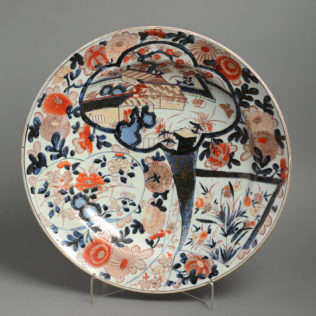
In Europe, the 17th century saw an increase in Orientalism and a shrinking Eurocentricity. Westerners increasingly craved exotic influences and were keen to own Eastern porcelain to demonstrate their worldliness.Comparing the size of Japan to that of China, it is easy to imagine that there was not going to be any competition in producing quantities large enough to supply to the West. Whilst various political events involving China (such as the ban of sea trading between 1656 and 1684 and the Opium Wars 1839/42 and 1856/60) would have easily opened up opportunities for Japanese Imari export to dominate over the Chinese, it ended up being the Japanese withholding themselves the potential of a significant market share. Their self-imposed isolation policy, instated between 1633 and 1639 (lifted only in 1868), meant that all export was forbidden. Strictly controlled exception were made only to Korea, China and the Dutch East India Company, which was allowed to ship out goods from Nagasaki. Thus, items were transported to Europe via Holland only.
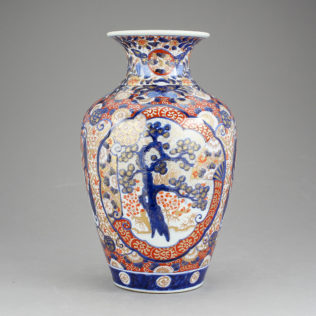
Difficult to come by and seemingly impossible to clone, the term “White Gold” was coined to replace the Franco-Italian word “porcelain”; and the drive to find the mysterious formula that would produce this elegant stonenware increased. However, Europe quickly realised that this endeavour was more difficult than it might have seemed. Alchemists across European courts were employed to overcome whatever obstacle they were facing, but it was not until 1712, that the French Jesuit father Francois Xavier d’Entrecolles uncovered the secret. Only then did it become possible for Europeans to start their own production of “China”, a term derived from the West’s poor understanding of Eastern geography, paving the way for Meissen et all.
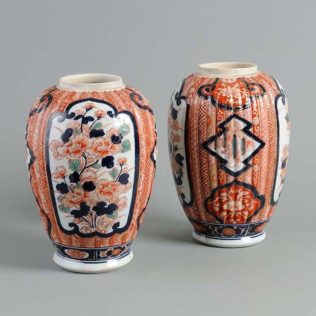
In the 19th century Japan eventually lifted its self isolation policy and borders were open to international trade once again. This neatly coincided with the rise of World Fairs, held (as the name suggests) in cities across the globe. At this, Imari porcelain became representative of Japanese craftsmanship and was appreciated by an even wider audience; prices and demand once again soared.
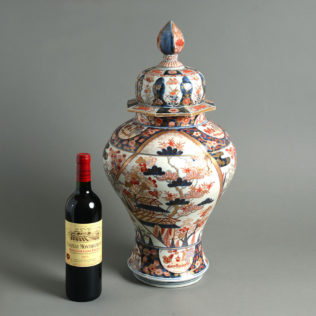
Today, Imari porcelain from any the above mentioned periods surfaces on the market rather frequently and become focal points in people’s houses once more. Be it larger chargers, small vases or medium sized jars, their decorative quality and investment potential have found a renaissance amongst collectors and enthusiasts alike.



